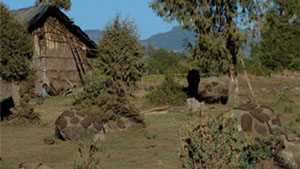What is an environmental health hazard?
In Study Session 1, you learned that environmental health addresses the assessment and control of environmental factors that can potentially affect health. It is targeted towards preventing disease, creating health-supporting environments and encouraging positive human behaviours. You have also learned about the general issues of environmental health risks. Our environment generally consists of physical, chemical and biological factors and our relationship with our environment is always interactive. This means that we affect our environment and our environment affects us. These interactions may expose us to environmental health hazards; that is any environmental factors or situations that can cause injury, disease or death.
It is worth pausing here to clarify the difference between hazard and risk. A hazard is something which is known to cause harm, that is, a source of danger to health. Risk is the likelihood or probability of the hazard occurring and the magnitude of the resulting effects. For example, if you climb a ladder you know there is a chance you could fall off and be injured, although it is unlikely. The ladder is the hazard and the chance of injury is the risk you take by climbing the ladder.
We will illustrate an environmental health hazard with an example. The production of cow dung cake to be used for fuel is a common practice in Ethiopia. Fresh dung supports the breeding of flies. Dung cake is usually prepared near to the house (Figure 2.1). Young flies need food and move from the dung to the food that is found in the house.
The flies pick up pathogenic organisms from the dung and transfer them to fresh food that is ready for consumption. A child eats the contaminated food and gets diarrhoea in a few days.

The conditions or the situation of producing dung cake close to the house is hazardous (or dangerous) because it facilitates the breeding of flies near to fresh food in the house. The infected food is the hazard that damages the child's health. In this example, the hazard arises because of the infectious agent (the pathogenic organisms) and the process or condition (the preparation of cow dung cake close to the house). The risk of getting an infection is very high if someone consumes food that is contaminated with an infectious agent.
What causes environmental hazards? List some different types of natural and human-produced hazards.
You may have listed a number of factors. Natural hazards include earthquakes, volcanic eruptions and flooding. Human-produced hazards are mainly related to pollution of the air, water and soil, and contamination of food.